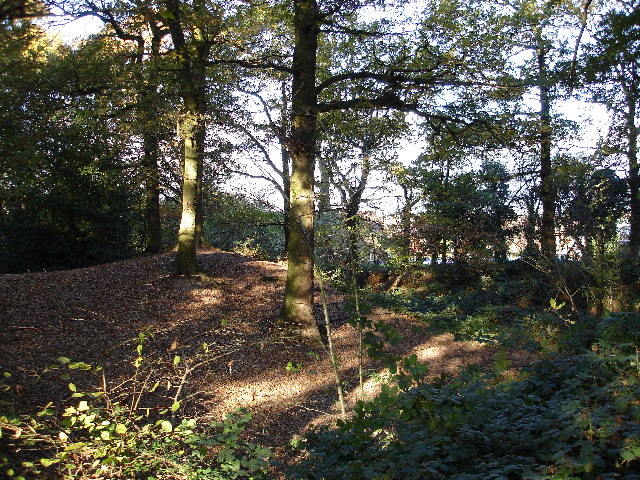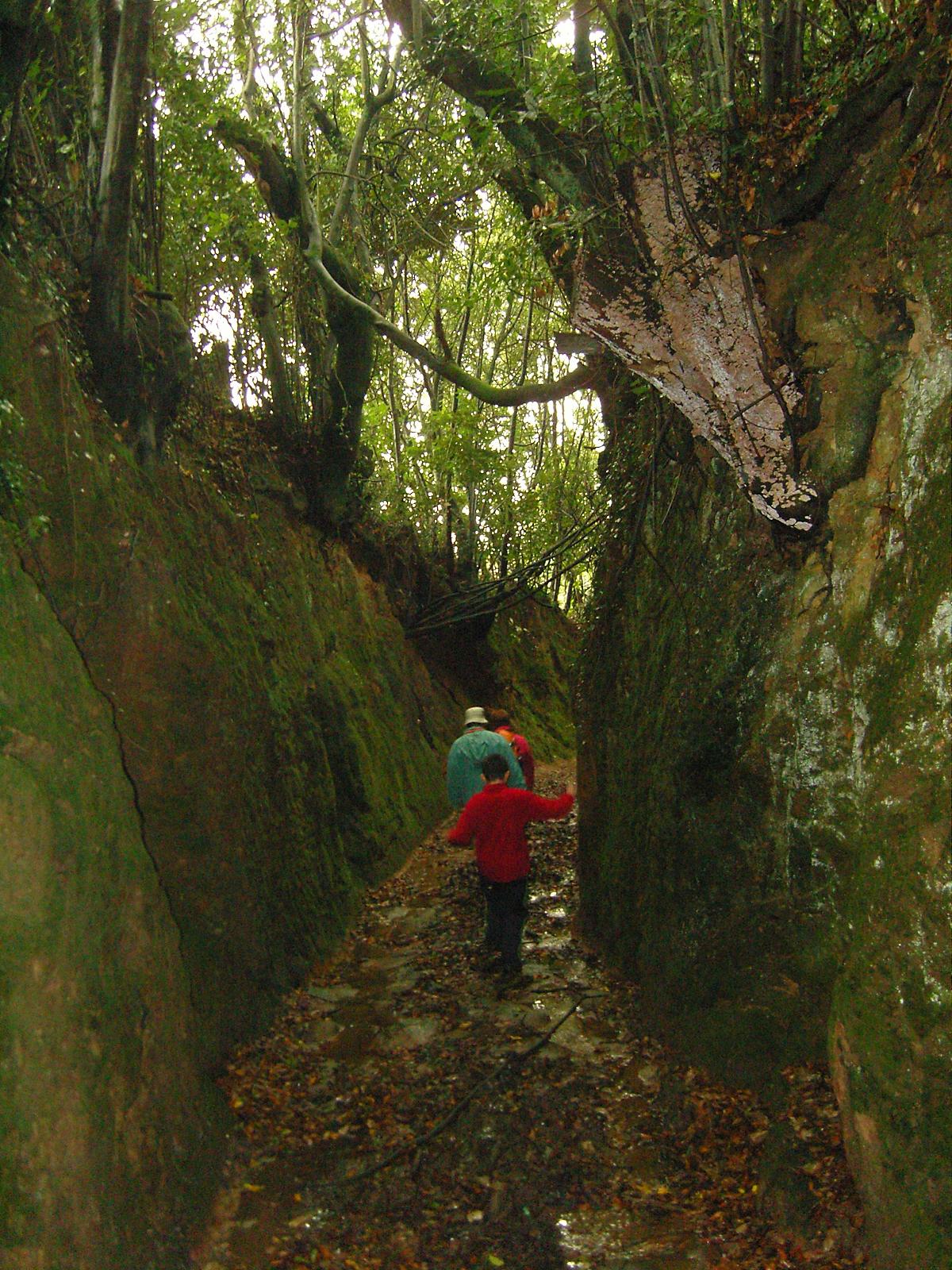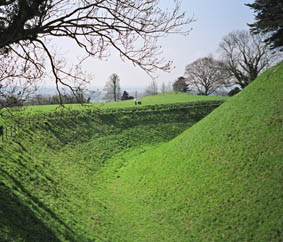|
Hobs Moat
Hobs Moat is a ruined 12th century castle located to the west of Hobs Moat Road and north of Castle Lane in Olton in Solihull Solihull (, or ) is a market town and the administrative centre of the wider Metropolitan Borough of Solihull in West Midlands County, England. The town had a population of 126,577 at the 2021 Census. Solihull is situated on the River Blyth ..., England. The site is designated a Scheduled monument, scheduled ancient monument, however, only the earthworks remain above the ground level. Etymology The prevailing theory is that the name 'Hobs Moat' is a corruption of 'Odingsells' Moat', so called because the founders of the castle were the de Odingsells, anciently written as 'Hoginsells', family. Other suggestions have been put forward, such as that after the ruin of the castle, the site was a location for the practice of pannage – where pigs ('hogs' corrupted to 'hobs') could be sent to eat acorns. Another, more fanciful theory, suggests that prior ... [...More Info...] [...Related Items...] OR: [Wikipedia] [Google] [Baidu] |
Ruins
Ruins () are the remains of a civilization's architecture. The term refers to formerly intact structures that have fallen into a state of partial or total disrepair over time due to a variety of factors, such as lack of maintenance, deliberate destruction by humans, or uncontrollable destruction by natural phenomena. The most common root causes that yield ruins in their wake are natural disasters, armed conflict, and population decline, with many structures becoming progressively derelict over time due to long-term weathering and scavenging. There are famous ruins all over the world, with notable sites originating from ancient China, the Indus Valley and other regions of ancient India, ancient Iran, ancient Israel and Judea, ancient Iraq, ancient Greece, ancient Egypt, Roman sites throughout the Mediterranean Basin, and Incan and Mayan sites in the Americas. Ruins are of great importance to historians, archaeologists and anthropologists, whether they were once individual f ... [...More Info...] [...Related Items...] OR: [Wikipedia] [Google] [Baidu] |
Rampart (fortification)
In fortification architecture, a bank or rampart is a length of embankment or wall forming part of the defensive boundary of a castle, hillfort, settlement or other fortified site. It is usually broad-topped and made of excavated earth and/or masonry.Darvill, Timothy (2008). ''Oxford Concise Dictionary of Archaeology'', 2nd ed., Oxford University Press, Oxford and New York, p. 376. . Early fortifications Many types of early fortification, from prehistory through to the Early Middle Ages, employed earth ramparts usually in combination with external ditches to defend the outer perimeter of a fortified site or settlement. Hillforts, ringforts or "raths" and ringworks all made use of ditch and rampart defences, and they are the characteristic feature of circular ramparts. The ramparts could be reinforced and raised in height by the use of palisades. This type of arrangement was a feature of the motte and bailey castle of northern Europe in the early medieval period. Types of ram ... [...More Info...] [...Related Items...] OR: [Wikipedia] [Google] [Baidu] |
Archaeological Sites In The West Midlands (county)
Archaeology or archeology is the scientific study of human activity through the recovery and analysis of material culture. The archaeological record consists of artifacts, architecture, biofacts or ecofacts, sites, and cultural landscapes. Archaeology can be considered both a social science and a branch of the humanities. It is usually considered an independent academic discipline, but may also be classified as part of anthropology (in North America – the four-field approach), history or geography. Archaeologists study human prehistory and history, from the development of the first stone tools at Lomekwi in East Africa 3.3 million years ago up until recent decades. Archaeology is distinct from palaeontology, which is the study of fossil remains. Archaeology is particularly important for learning about prehistoric societies, for which, by definition, there are no written records. Prehistory includes over 99% of the human past, from the Paleolithic until the advent of ... [...More Info...] [...Related Items...] OR: [Wikipedia] [Google] [Baidu] |
Ruins In The West Midlands (county)
Ruins () are the remains of a civilization's architecture. The term refers to formerly intact structures that have fallen into a state of partial or total disrepair over time due to a variety of factors, such as lack of maintenance, deliberate destruction by humans, or uncontrollable destruction by natural phenomena. The most common root causes that yield ruins in their wake are natural disasters, armed conflict, and population decline, with many structures becoming progressively derelict over time due to long-term weathering and scavenging. There are famous ruins all over the world, with notable sites originating from ancient China, the Indus Valley and other regions of ancient India, ancient Iran, ancient Israel and Judea, ancient Iraq, ancient Greece, ancient Egypt, Roman sites throughout the Mediterranean Basin, and Incan and Mayan sites in the Americas. Ruins are of great importance to historians, archaeologists and anthropologists, whether they were once individu ... [...More Info...] [...Related Items...] OR: [Wikipedia] [Google] [Baidu] |
History Of Warwickshire
This is about the history of the county Warwickshire situated in the English Midlands. Historically, bounded to the north-west by Staffordshire, by Leicestershire to the north-east, Northamptonshire to the east, Worcestershire to the west, Oxfordshire to the south and Gloucestershire to the south-west. Areas historically part of Warwickshire include Coventry, Solihull, Sutton Coldfield and much of central Birmingham including Aston and Edgbaston. These became part of the metropolitan county of West Midlands (Sutton Coldfield becoming part of Birmingham) following local government re-organisation in 1974 after the passage of the Local Government Act 1972.HMSO. Local Government Act 1972. 1972 c.70 Much of northwestern Warwickshire, including that area now forming part of Coventry, Solihull and Birmingham, was covered by the ancient Forest of Arden which was still the case at the time of the Domesday Book but much of which was later cut down to provide fuel for industrialisatio ... [...More Info...] [...Related Items...] OR: [Wikipedia] [Google] [Baidu] |
Weoley Castle (house)
Weoley Castle is the remains of a fortified manor house located in the Birmingham district of Weoley Castle, a primarily residential area, in the English West Midlands. Owned by Birmingham City Council and administered as a community museum by Birmingham Museums Trust, it is a Grade II listed building and a Scheduled monument. The castle was on Historic England's Heritage at Risk Register, but was removed in 2009 following repair work. History The archaeological evidence suggests a Norman foundation for the site which was surrounded by a moat and bank topped by a timber palisade. Roger de Somery obtained a licence in 1264 to crenellate Weoley Castle and a 1422 survey gives a plan of the building. Early 13th century wooden buildings have been discovered at the site, probably dating to around 1264, indicating an early use of both horizontal and vertical weatherboarding. By the 17th century, Weoley Castle was noted as a '' (ruined castle) and it was no longer in use by then. Also ... [...More Info...] [...Related Items...] OR: [Wikipedia] [Google] [Baidu] |
Baddesley Clinton
Baddesley Clinton () is a moated manor house, about 8 miles (13 km) north-west of the town of Warwick, in the village of Baddesley Clinton, Warwickshire, England. The house probably originated in the 13th century, when large areas of the Forest of Arden were cleared for farmland. The site is a Scheduled Ancient Monument and the house is a Grade I listed building. The house, park and gardens are owned by the National Trust and open to the public; they lie in a civil parish of the same name. History In 1438 John Brome, Under-Treasurer of England, purchased the manor, which passed to his son, Nicholas Brome (d.1517), who rebuilt the nearby parish church dedicated to St Michael, as a penance for having murdered the parish priest, a crime reputed to have been committed inside the house. The house from this period was equipped with gun-ports, and possibly a drawbridge over the moat. When Nicholas Brome died in 1517, the house passed to his daughter, who in 1500 had married Sir ... [...More Info...] [...Related Items...] OR: [Wikipedia] [Google] [Baidu] |
Kenilworth Castle
Kenilworth Castle is a castle in the town of Kenilworth in Warwickshire, England managed by English Heritage; much of it is still in ruins. The castle was founded during the Norman conquest of England; with development through to the Tudor period. It has been described by the architectural historian Anthony Emery as "the finest surviving example of a semi-royal palace of the later middle ages, significant for its scale, form and quality of workmanship". Kenilworth played an important historical role: it was the subject of the six-month-long siege of Kenilworth in 1266, thought to be the longest siege in Medieval English history, and formed a base for Lancastrian operations in the Wars of the Roses. Kenilworth was the scene of the removal of Edward II from the English throne, the perceived French insult to Henry V in 1414 of a gift of tennis balls (said by John Strecche to have prompted the campaign that led to the Battle of Agincourt), and the Earl of Leicester's lavish re ... [...More Info...] [...Related Items...] OR: [Wikipedia] [Google] [Baidu] |
Maxstoke Castle
Maxstoke Castle is a privately owned moated castle dating from the 14th century, situated to the north of Maxstoke in Warwickshire, England. History It was built by Sir William de Clinton, 1st Earl of Huntingdon, in 1345 to a rectangular plan, with octagonal towers at each angle, a gatehouse on the east, and a residential range on the west, the whole surrounded by a broad moat. Clinton died in 1354 but his widow, Juliana Leybourne spent time here even after her next marriage. Additions were made by Humphrey Stafford, 1st Duke of Buckingham who acquired it in 1437 by exchanging it for other manors in Northamptonshire. The castle is unusual in that it has survived largely intact. Amongst the antiquities there is a 15th-century chair upon which Henry VII of England, Henry VII was crowned after the Battle of Bosworth in 1485, a table owned by Sir Everard Digby (cousin to the Digbys of Coleshill, Warwickshire, Coleshill) around which the Gunpowder Plot was planned in 1605, and a 'Whi ... [...More Info...] [...Related Items...] OR: [Wikipedia] [Google] [Baidu] |
Sunken Lane
A sunken lane (also hollow way or holloway) is a road or track that is significantly lower than the land on either side, not formed by the (recent) engineering of a road cutting but possibly of much greater age. Various mechanisms have been proposed for how holloways may have been formed, including erosion by water or traffic; the digging of embankments to assist with the herding of livestock; and the digging of double banks to mark the boundaries of estates. All of these mechanisms could apply in different cases. Means of formation A variety of theories have been proposed for the origins of holloways. Different mechanisms may well apply in different cases. Erosion Some sunken lanes are created incrementally by erosion, by water and traffic. Some are very ancient with evidence of Roman or Iron Age origins, but others such as the Deep Hill Ruts in the old Oregon Trail at Guernsey, Wyoming developed in the space of a decade or two. Where ancient trackways have lapsed from u ... [...More Info...] [...Related Items...] OR: [Wikipedia] [Google] [Baidu] |
Counterscarp
A scarp and a counterscarp are the inner and outer sides, respectively, of a ditch or moat used in fortifications. Attackers (if they have not bridged the ditch) must descend the counterscarp and ascend the scarp. In permanent fortifications the scarp and counterscarp may be encased in stone. In less permanent fortifications, the counterscarp may be lined with paling fence set at an angle so as to give no cover to the attackers but to make advancing and retreating more difficult. If an attacker succeeds in breaching a wall a coupure can be dug on the inside of the wall to hinder the forlorn hope, in which case the side of the ditch farthest from the breached wall and closest to the centre of the fortification is also called the counterscarp. Counterscarp gallery These are tunnels or "galleries" that have been built behind the counterscarp wall inside the moat or ditch. Each gallery is pierced with loopholes for musketry, so that attacking forces that enter the moat can be dire ... [...More Info...] [...Related Items...] OR: [Wikipedia] [Google] [Baidu] |
Ditch (fortification)
In military engineering, a ditch is an obstacle designed to slow down or break up an attacking force, while a trench is intended to provide cover to the defenders. In military fortifications the side of a ditch farthest from the enemy and closest to the next line of defence is known as the scarp while the side of a ditch closest to the enemy is known as the counterscarp. Uses In early fortifications, ditches were often used in combination with ramparts to slow down the enemy whilst defensive fire could be brought to bear from the relative protection afforded by the rampart and possibly the palisade. In medieval fortification, a ditch was often constructed in front of a defensive wall to hinder mining and escalade activities from an attacker. When filled with water, such a defensive ditch is called a moat. However, moats may also be dry. Later star forts designed by military engineers like Vauban, comprised elaborate networks of ditches and parapets, carefully calculated ... [...More Info...] [...Related Items...] OR: [Wikipedia] [Google] [Baidu] |



.jpg)







